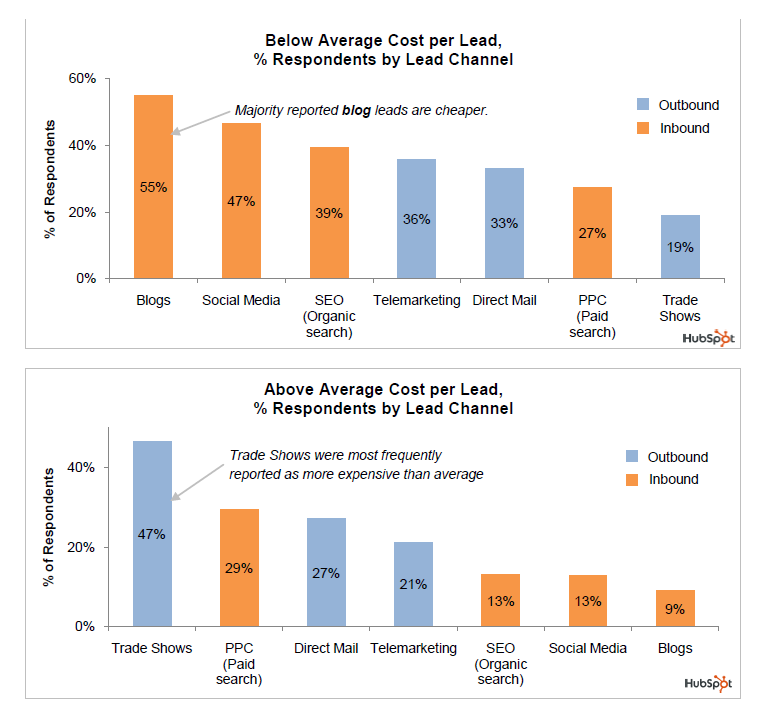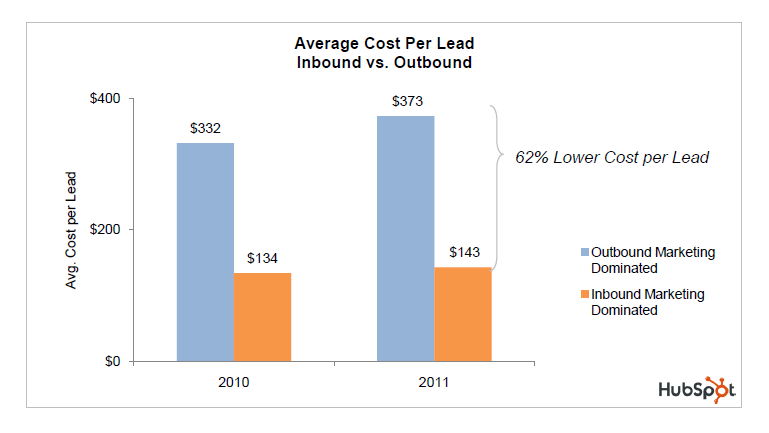Hubspot, a leader in Inbound Marketing, recently surveyed 644 companies to ascertain the state of both Traditional Media (print ads, telemarketing, tradeshows, etc.) & Inbound Marketing. As Hubspot defines it: “Inbound Marketing is a set of marketing strategies and techniques focused on pulling relevant prospects and customers towards a business and it’s products.”
This is part 2 of a 13 part series of blog posts that share bite-size portions of Hubspot’s overall report, “The 2011 State of Inbound Marketing.” If you’d like a full copy of the report, feel free to contact me by clicking here or search for the report by name on Google.

Great news for those business owners who jumped into blogging in the past two years as part of their enterprise social media campaign. With a 55% lower average cost per lead, Pretty consistently through the report, blogs had a great score. One thing that wasn’t clear to me was the conversion to sale aspect. Obviously, if very few of the blog leads convert to a sale, that would be important to know. However, it’s also difficult to track that data with over 600 companies.
But since Hubspot software does have the capability to track sales from social media, using their closed loop analytics package, individual companies do have the ability to track this kind of data. Perhaps someday Hubspot will be able to share an overall view of it as well.
What’s very clear is that SEO utilizing long-tail keyword research, social media tools like Facebook and especially blogs are a must-have for pretty much every effective marketing plan in 2011.
Click this button to Connect

Interested in learning more about how The Association can help you implement enterprise social media and Inbound Marketing? Visit my resources blog for helpful videos or fill out a request form here.


